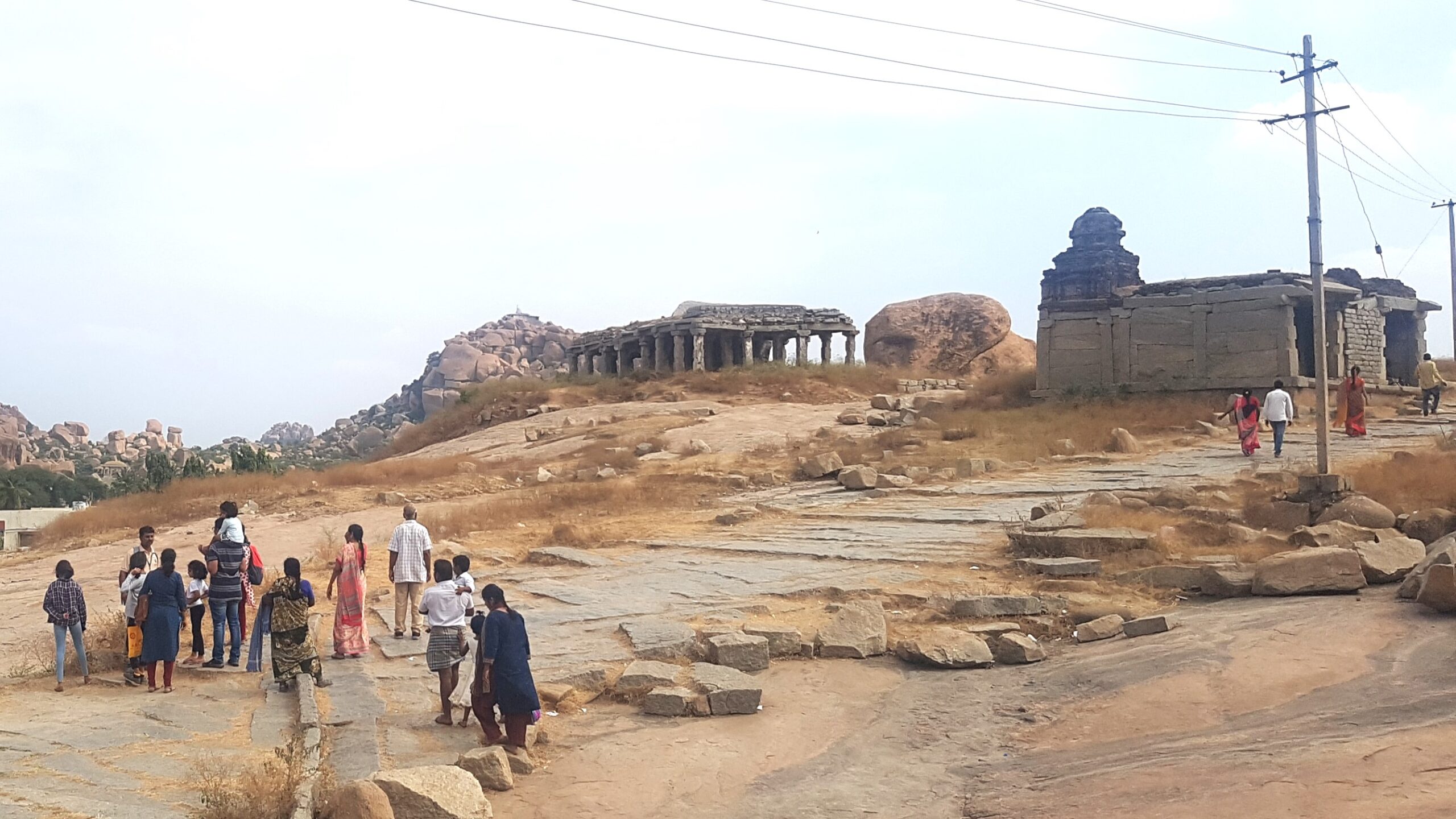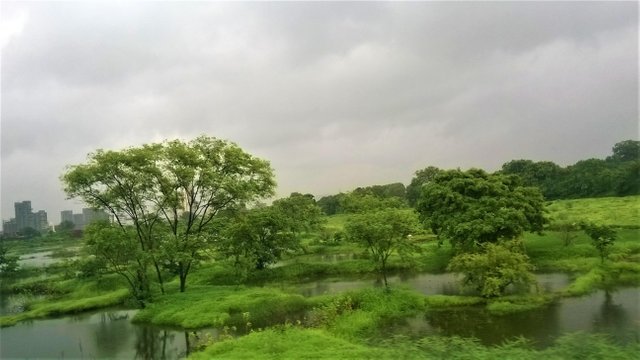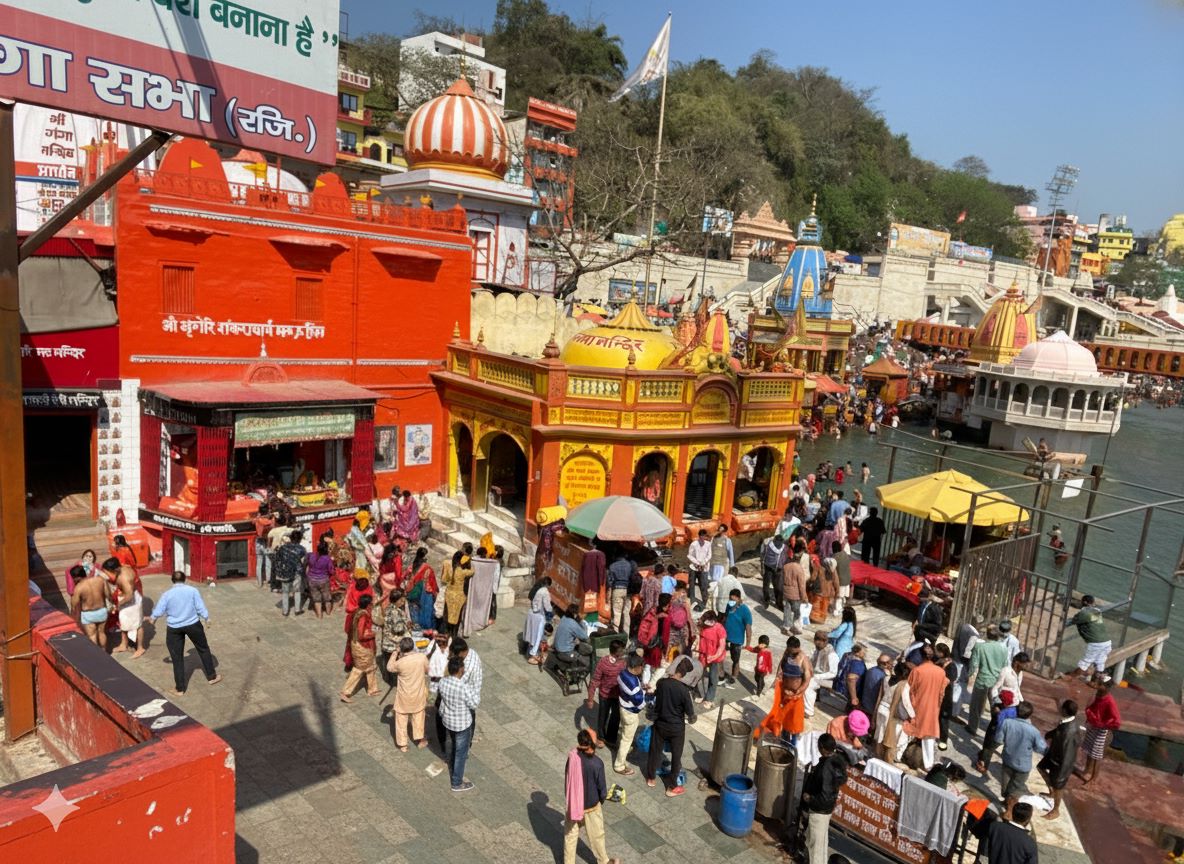Hampi stands as a poem made in stone — The ruins in every location across the vast area have stories of a glorious past. There are countless frames that capture its silent grandeur during my visit, but sharing hundreds of photos in one post isn’t practical. So, here begins the Photo Feature — a curated glimpse into Hampi’s beauty, where each image holds a fragment of history and emotion.
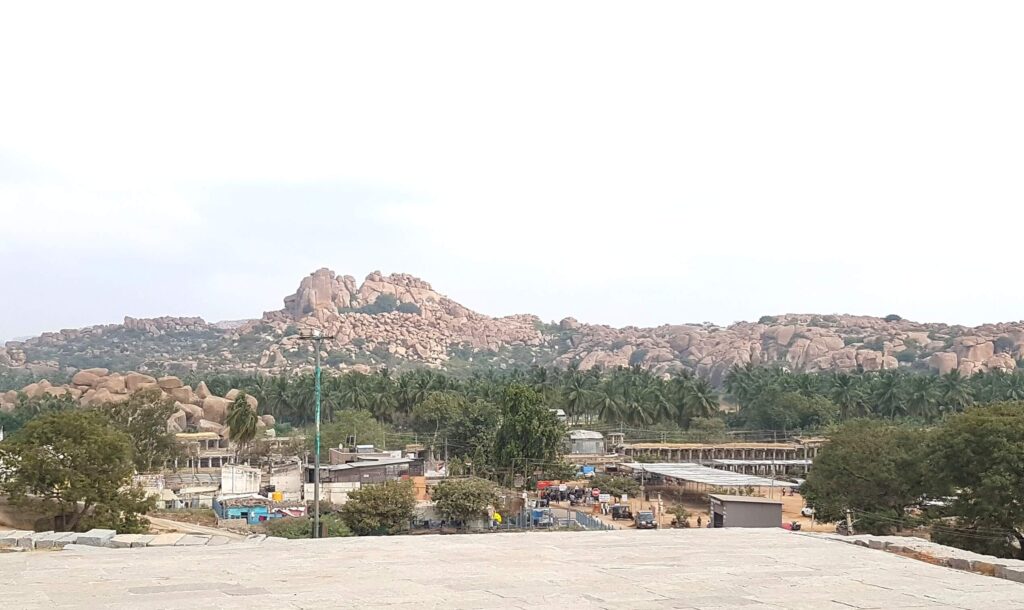
The rocky hills of Hampi stretch across a vast area, surrounded by green palms and traces of old stone pathways. The scene feels calm and timeless, holding the silence of history in every rock.
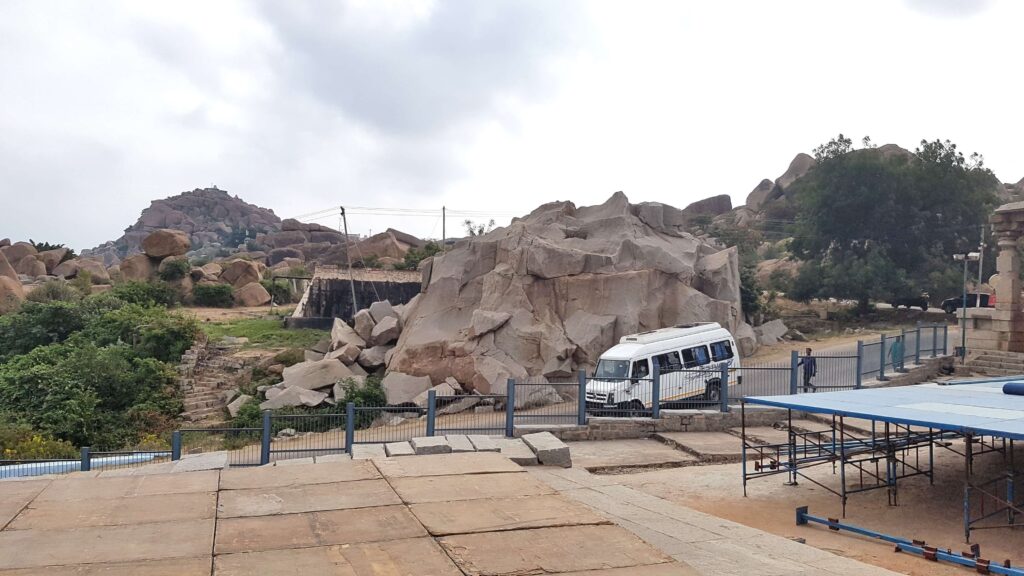
Large boulders and scattered ruins mark the rugged land of Hampi. A road through the stones, where modern life meets the ruins of an ancient world.

View from Ganapathi Temple – A small shrine rests among the rocks, carrying the quiet grace of Hampi’s ancient spirit.
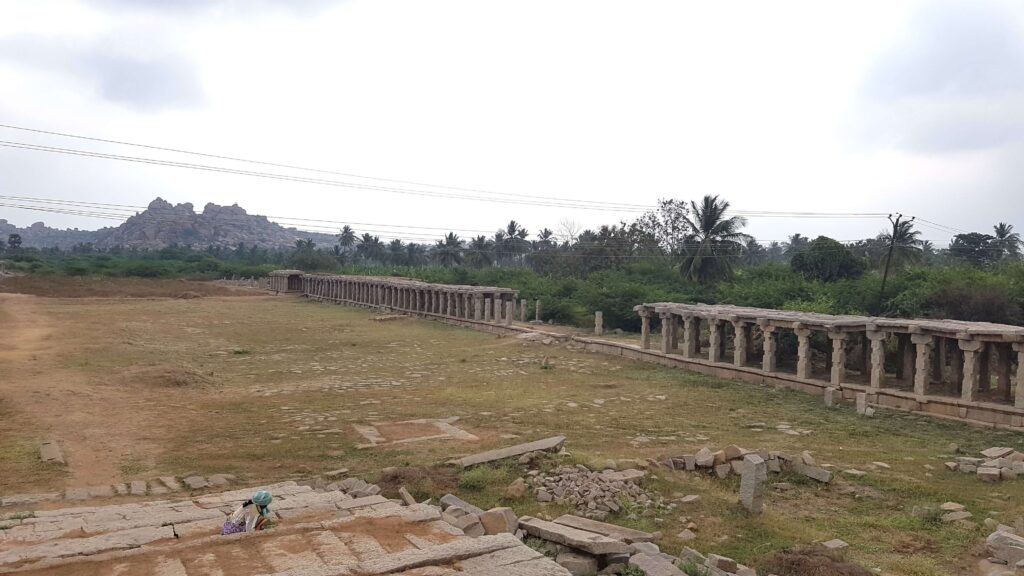
The silent bazaar street of Hampi, lined with endless stone pillars on both sides, stands as a quiet reminder of a time when life and trade once filled these open spaces.
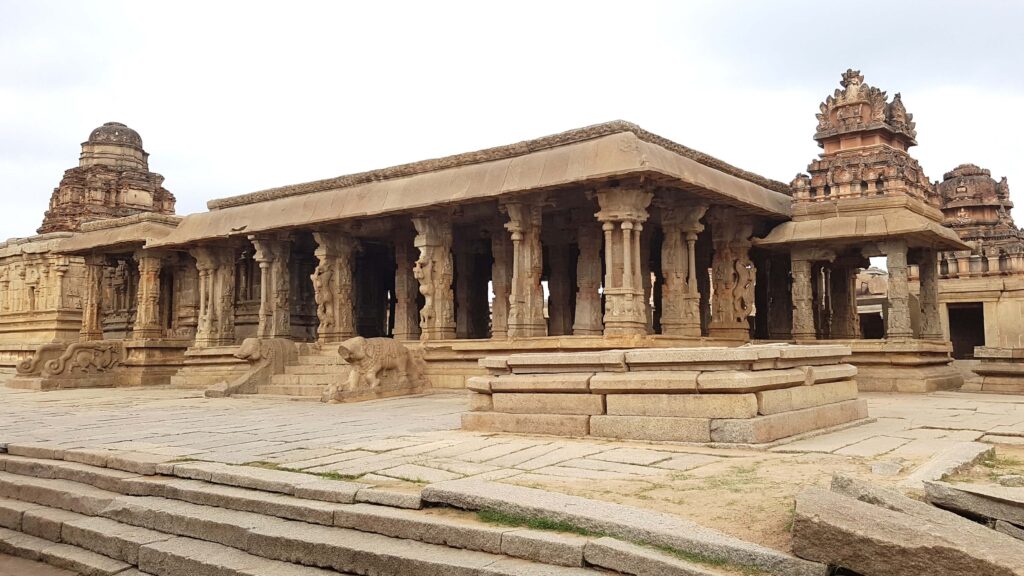
This temple at Hampi stands as a fine example of Vijayanagara architecture. Ten avatars of Lord Vishnu including the rare one of Kalki are carved on one of the pillars that looks so special

The Krishna Temple is known for its detailed carvings and Dravidian architectural style
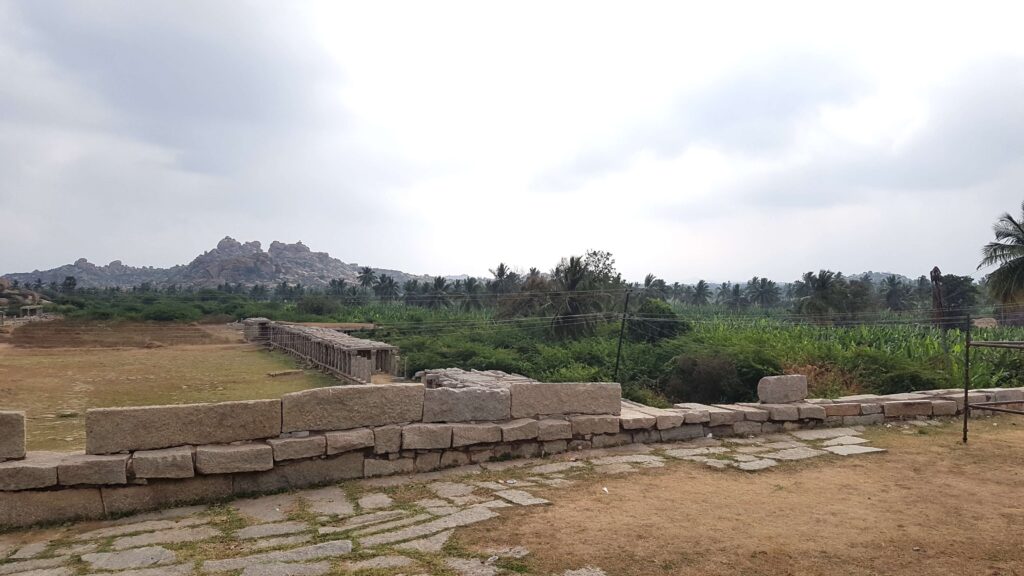
Hampi is located along the Tungabhadra River and is known for its unique landscape of rocky hills and lush greenery.
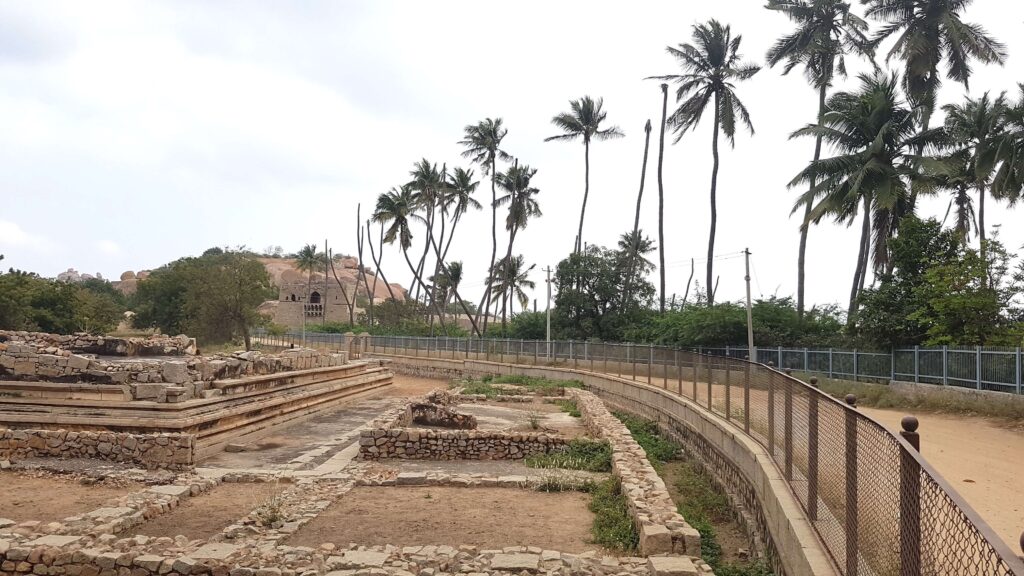
The ruins are a major tourist destination and are spread over a vast area of more than 4,000 acres.
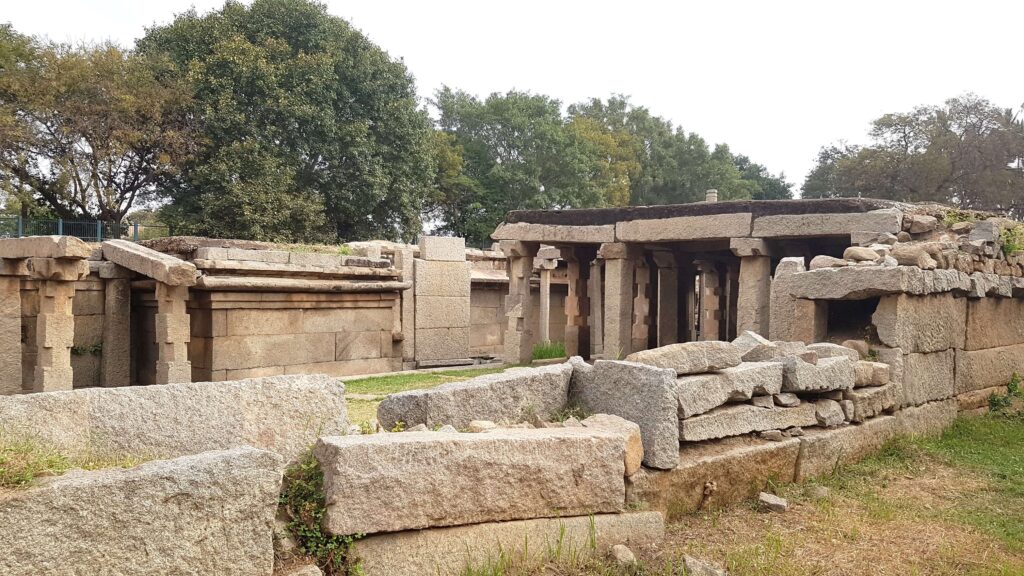
The temple is dedicated to Prasanna Virupaksha, an avatar of Lord Shiva
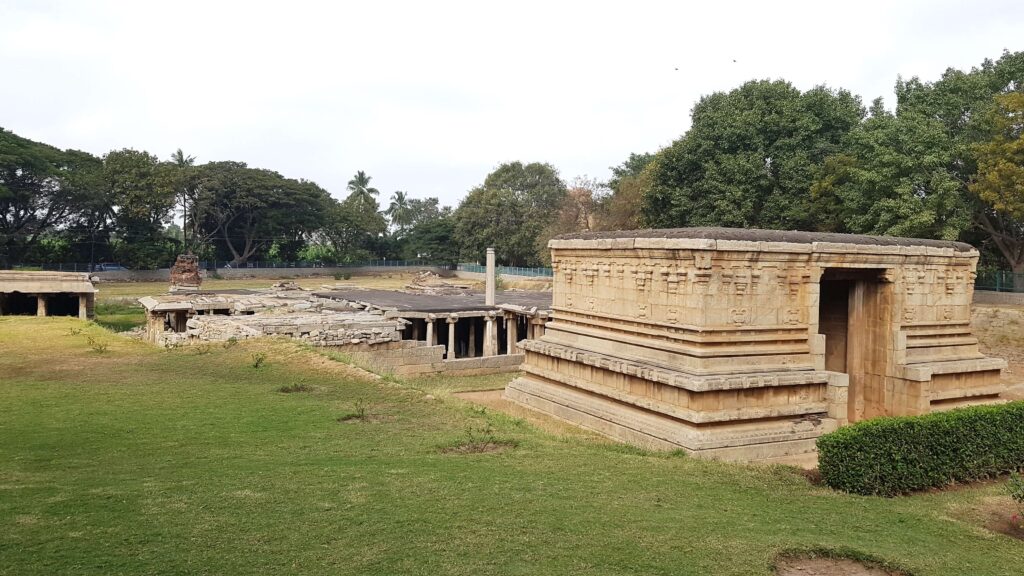
Prasanna Virupaksha Temple (a form of Lord Shiva). It is called the “Underground Shiva Temple” because the main structure is located several meters below ground level, with the roof at the current ground level

The Lotus Mahal inside Zanana Complex known for its unique architecture, which blends Indian and Islamic styles. The building gets its name from its archways, which are carved to resemble the petals of a lotus flower.

This three-tiered stone platform was built by King Krishnadevaraya to commemorate his victory over the Udaygiri Kingdom. It served as a ceremonial stage from where the king witnessed Dasara celebrations and other royal events.

The Guards’ Quarters, situated beside the Elephant Stables, form part of the Zenana Enclosure. Its strategic location ensured security and constant vigilance over the royal enclosure.

Guards’ Quarters (on the left) and the Elephant Stables (on the right), with the open lawn between them being prepared for some cultural event. The Elephant Stable consists of a long row of 11 domed chambers, with a central one that is larger and more ornate
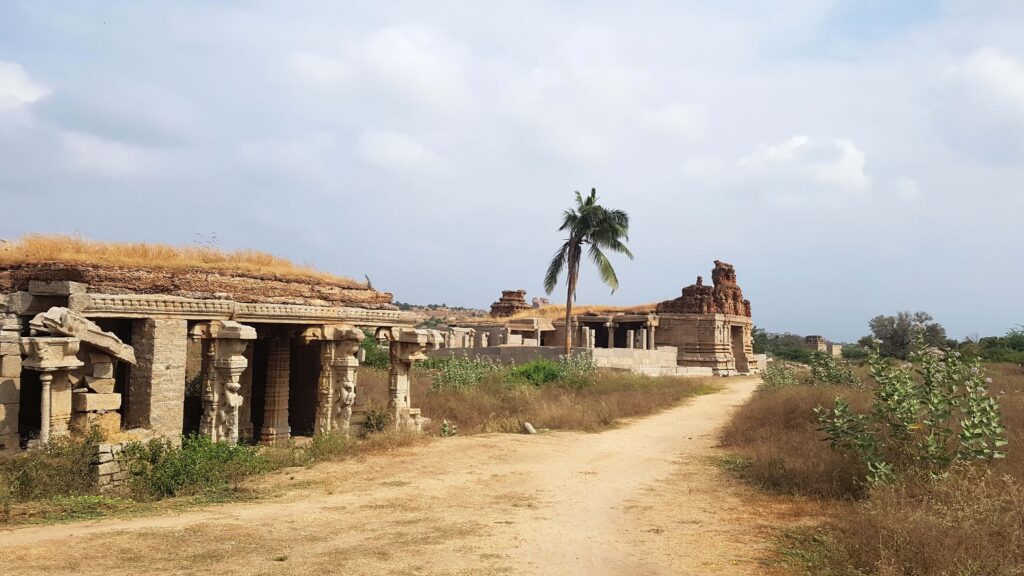
The site contains over 1,600 monuments and is often referred to as the “World’s Largest Open-air Museum
Closing Note:
Each corner of Hampi breathes the rhythm of time — stones that stood tall through centuries, silent witnesses to splendor and fall. This was just a glimpse of its enduring charm. More stories in stone await in the next part of this Foto Feature — where ruins continue to speak louder than words.

